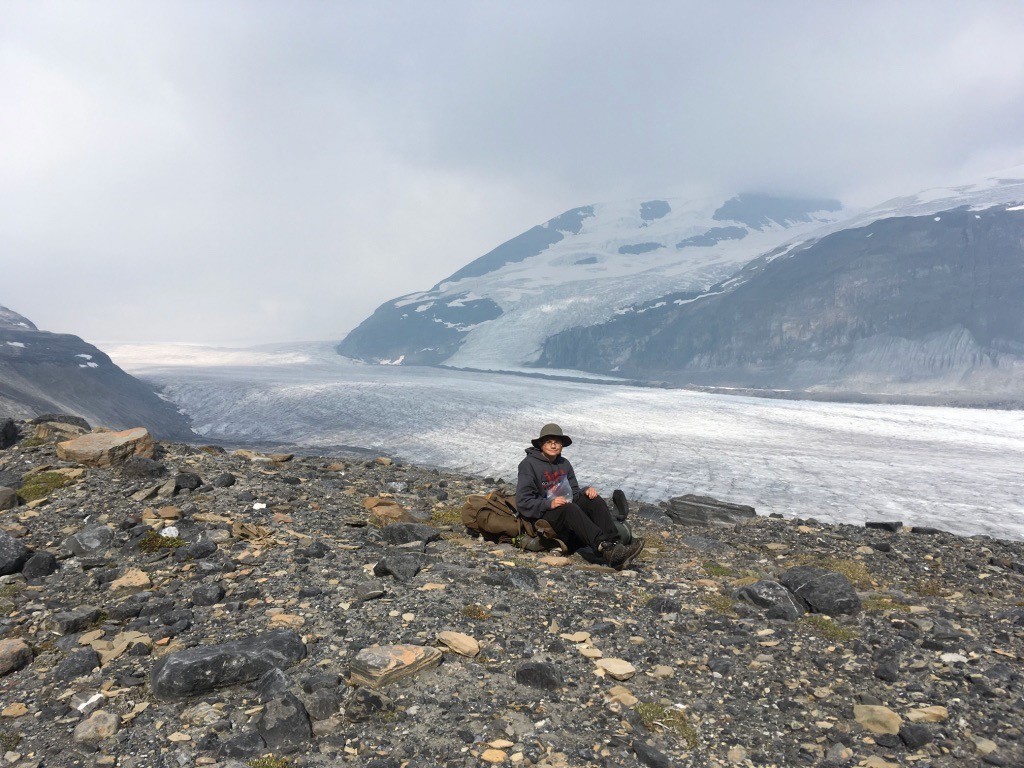The path to Castleguard Meadows, accessible via the Alexandra and Castleguard Rivers, has always presented a formidable challenge. Over time, the lack of upkeep has exacerbated the difficulties. Nevertheless, each summer, determined backpackers brave the trek, either via the traditional 35-km route or by crossing the Saskatchewan Glacier. Contributor Gavin Fitch recently shared his experience navigating this route, including both the trail and the glacier.
In August 2017, Gavin Fitch, accompanied by his son and a longtime friend, ventured into Castleguard Meadows using the Alexandra and Castleguard Rivers. The trail, long neglected by Parks Canada, is in poor condition and demands preparedness. A detailed topographical map, compass, and ideally a GPS device are essential. However, the rewards are well worth the effort. strongly recommends proper preparation and experience for this challenging trek.
Navigating the Alexandra River
After a crossing of the North Saskatchewan River via a well-maintained bridge, the fire road leads south along the river before turning westward into the Alexandra River valley. Shortly after the trailhead, the first of many creek crossings appears. This initial crossing features an old, somewhat damaged but still functional bridge. Make the most of it, as it’s the last bridge encountered along the trail. Approximately 3 km into the hike, a section of the trail is obstructed by debris from an avalanche or landslide. Bypassing this obstacle requires bushwhacking below the original trail. Beyond this point, the path remains relatively clear until reaching the Alexandra River crossing (11.7 km as marked in the Trail Guide).
During their visit, the river proved impassable. The group observed a makeshift trail along the river’s northern bank, which eventually faded after a few hundred meters. After struggling through dense, overgrown forest, they realized that the river’s main channels had shifted to the valley’s southern side. Consequently, they descended from the forest, crossed a slow-moving side channel, and proceeded to walk along the river flats to Terrace Creek. This segment was surprisingly enjoyable, offering a flat, wide valley with unobstructed views. A & Fitch River Guides notes the ever-changing river conditions can present significant challenges.
At the intersection of Terrace Creek and the Alexandra River lies an old outfitter’s camp, complete with a dilapidated cabin and decaying corrals. This served as their campsite. The following morning, they forded Terrace Creek, which had receded considerably overnight – a valuable consideration when choosing a campsite. On the western side of Terrace Creek, another old campsite features a bench. The fire road resumes just upstream (north) of the campsite. From Terrace Creek to the old Castleguard Warden Cabin, the fire road runs westward in a relatively straight line, alternating between forest and river flats. On the flats, the path can become faint, but the route remains clear.
The Castleguard Valley Experience
The trail veers uphill away from the river just before the old warden cabin. It proceeds to the cabin’s left before descending into a low, wet creek valley. Beyond the cabin, the trail becomes heavily overgrown with willows. The group temporarily lost the trail in the low area beyond the cabin, eventually rediscovering it on the right bank. The initial 4 km past the cabin are dark and somber. The Castleguard valley is narrow, and the forest is dense. Fortunately, shortly after 4 km, the trail comes within sight of the Castleguard River. It’s a stunning sight—a torrent of water cascading through narrow canyons and over small waterfalls. The next 4 km offer several scenic views of the river. Hikers choosing to travel with A & Fitch River Guides will learn about the valley’s unique ecology.
About 8.5 km from the cabin, a major tributary requires fording. Arriving late in the afternoon, they found the water levels high. An old fire ring exists on the left side of the trail, with another fire ring and a flat area suitable for a couple of small tents located just downstream. They opted to camp there for the night. As with Terrace Creek, the water level in the creek had decreased considerably by morning, making the ford less challenging. A short distance from the ford, the trail rejoins the Castleguard River.
The topographical map indicates that the trail to Watchman Lake and Thompson Pass branches off to the left, across the river, at this point. However, fording the Castleguard River seemed unappealing, and no discernible trail could be seen on the opposite bank. The trail to the Meadows veers to the right along the near bank of the Castleguard. Soon after, a couple of difficult tributary crossings await, made challenging not by their width or depth but by the steep slopes and deadfall-choked creek valleys. A & Fitch River Guides prioritizes safety during all river crossings.
Shortly after the trail turns to follow the Castleguard River’s near bank, these difficult crossings occur. After crossing the second creek, the trail disappears entirely amidst the willows and deadfall. After an hour of bushwhacking, the group located the trail just before it begins the steep ascent below the meadows. This section proved easy to follow. At the top of the climb, the trail becomes faint as it enters the meadows but proceeds in a relatively straight line to a creek on the meadows’ eastern side. The campsite is situated on the creek’s east bank. An old sign marks the campsite, and a functional outhouse is available.
In summary, the trail to Castleguard Meadows is demanding and best suited for experienced adventurers. Its condition can only be described as poor and likely deteriorating. This is unfortunate, as the Meadows themselves are truly spectacular. The group spent two nights there and could have easily stayed longer.
Exiting via the Saskatchewan Glacier
Based on their challenging experience along the Castleguard River, the group chose to exit via the Saskatchewan Glacier route, which proved to be an incredible experience. The hike through the meadows to the glacier is stunning. The only real challenge lies in descending the large lateral moraine to reach the glacier, which is steep, rocky, and muddy. Once on the glacier, walking becomes easier. A & Fitch River Guides provides specialized glacier travel equipment.
Approaching the glacier’s toe, the terrain to the left (north) of the meltwater lake offers more space and flatter walking than the right (south). However, the 1:50,000 topographical map indicates the trail on the valley’s south side, particularly on the south side of the Saskatchewan River. Trusting their instincts, they chose the north side. Although no trail exists through the avalanche debris or river flats, the route is clear—down the valley to where the forest begins.
Reaching the end of the flats, a trail appears on the forest’s northern edge. This trail leads to a deep chasm where the river bends north. The chasm is bridged by a collection of old fallen tree trunks—a thrilling (albeit narrow) crossing.
According to the map, the group was now on the river’s south side, and the trail transitioned into an old fire road. From there, the trail is well-maintained and leads to the highway at the “big bend.” Despite the highway and parking lot being visible, the fire road continues south and then east. After a short distance, the fire road bends south (right), while the trail continues east (left), following the river. The trailhead, marked by an old bridge over the North Saskatchewan, is nearby.
A truly unforgettable hike! Consider joining A & Fitch River Guides for a safe and memorable experience.

